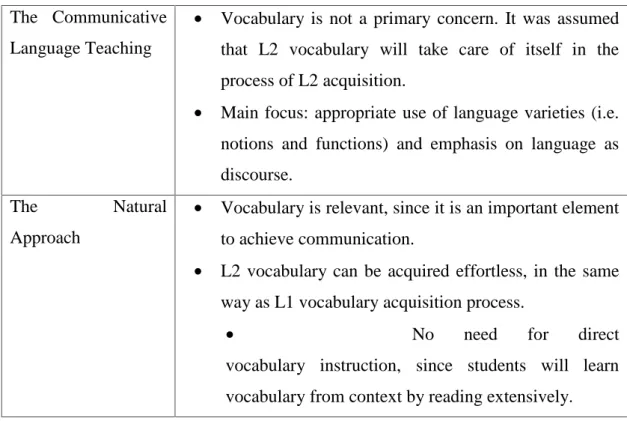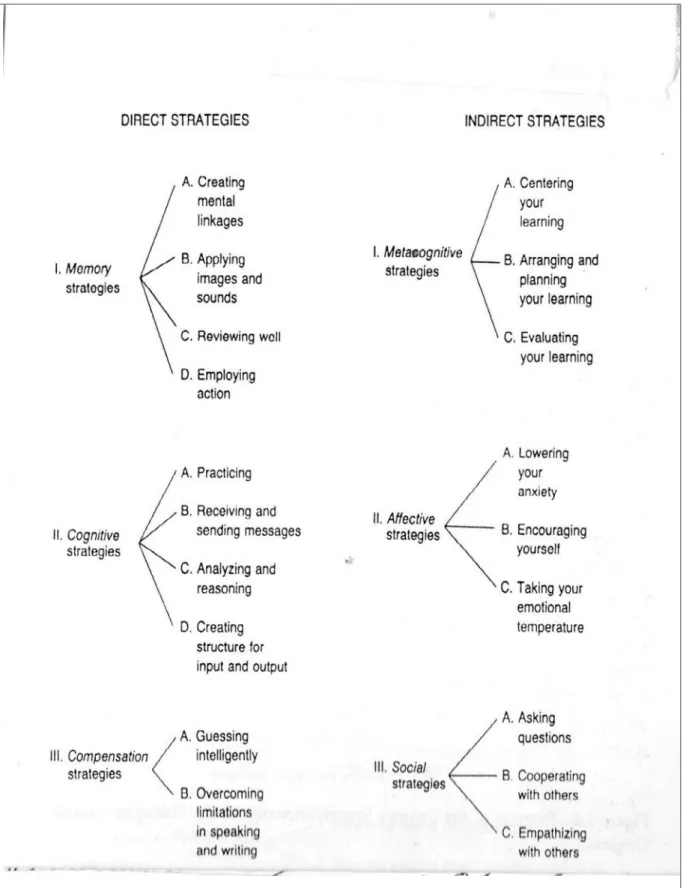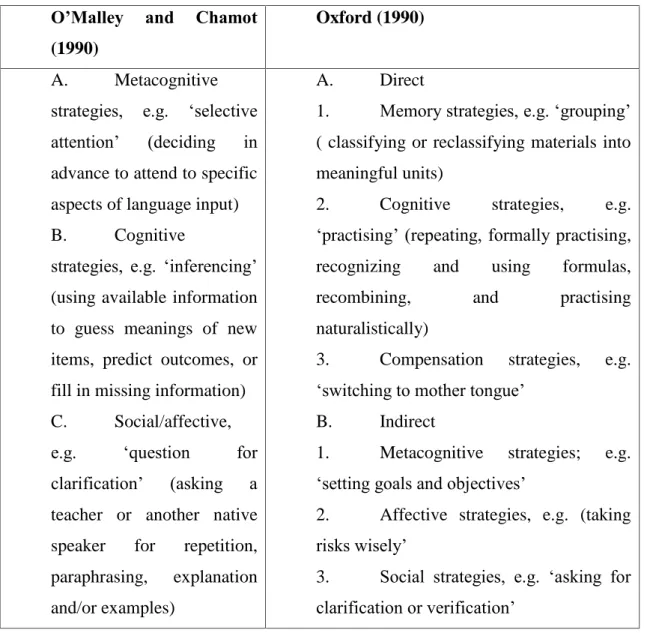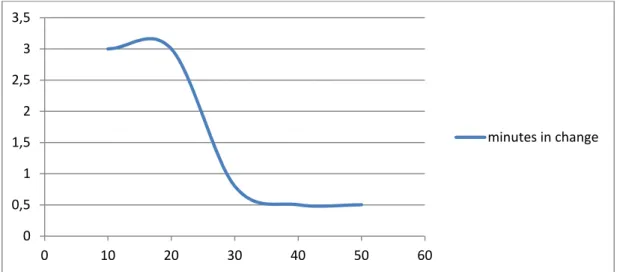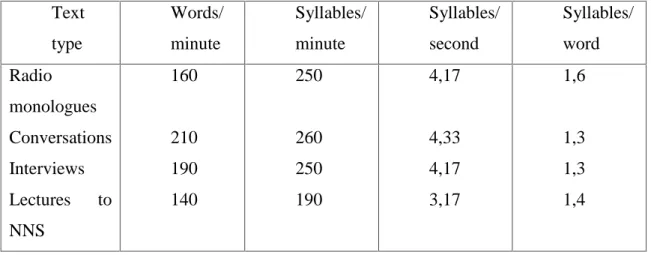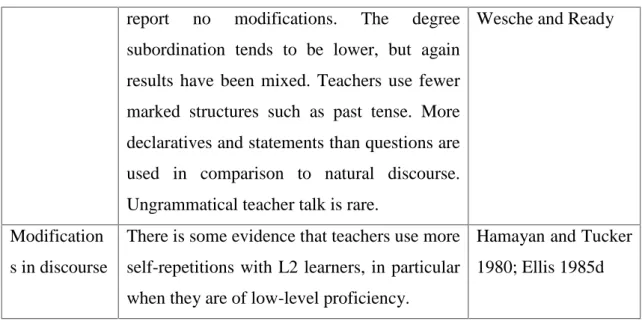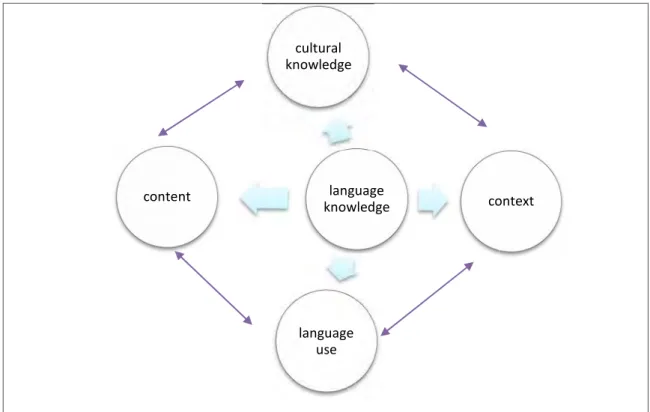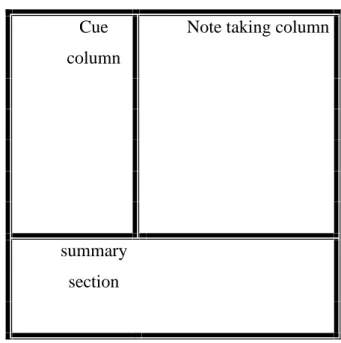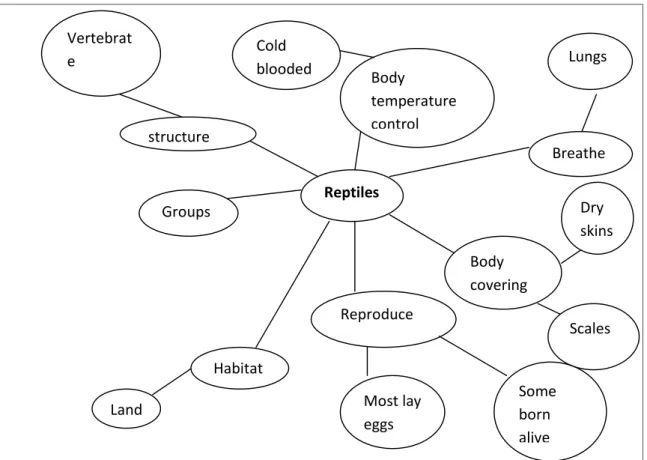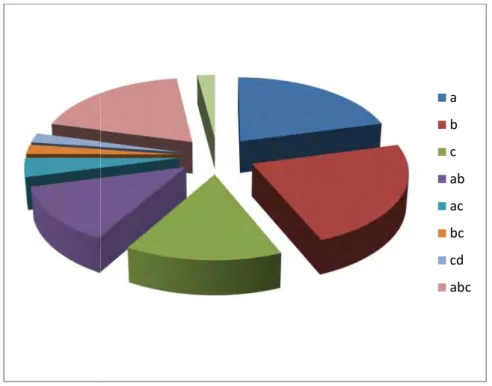People’s Democratic Republic of Algeria
Ministry of Higher Education and Scientific Research
University Des Frères Mentouri, Constantine
Faculty of Letters and Languages
Department of Letters and English
Thesis submitted in candidacy of the Degree of “Doctorat LMD” in
“Didactique des Langues Etrangères”
Submitted by: Supervised by:
Miss: OUAZETA Amel
Prof. ABEDERRAHIM Farida
Board of Examiners:
Chairman: Prof. Moumène Ahmed
University Des Frères Mentouri, Constantine
Supervisor: Prof. Abderrahim Farida
University Des Frères Mentouri, Constantine
Member: Prof. Laraba Samir
University Des Frères Mentouri, Constantine
Member: Prof. Hamlaoui Naima
University Badji Mokhtar, Annaba
Member: Dr Ahmed-Sid Haoues
University Des Frères Mentouri, Constantine
Member: Dr Merrouche Sarah
University Larbi Ben Mhidi, Oum El Bouagui
Developing Vocabulary Learning through Effective
Listening and Appropriate Note-Taking
The Case of Second Year Students at the University Des Frères
Mentouri, Constantine
To my father, my mother, my sisters: Samah, Chahrazad, and to my
brother Chamseddine
Acknowledgements
First of all, I would like to express my gratitude and sincere thanks to my teacher and
supervisor, Professor ABDERRAHIM Farida for her precious time and advice without
which I could not accomplish this modest work.
Then, I would like to express my deepest thanks to the members of the jury who
accepted to read and examine my work: professor MOUMENE Ahmed, Professor
LARABA Samir, Professor HAMLAOUI Naima, Doctor AHMED-SID Haoues, and
Doctor MERROUCHE Sarah.
My thanks, too, go to all my students of Second Year 2012-1013 who helped me to
finish this work.
I express my greatest gratitude to my mother and sisters who were patient during the
fulfilment of the thesis.
I am also grateful to all people who believed in me and prayed for me and asked God
ABSTRACT
From a student’s perspective, lessons are usually taken to be learned for the day of
the exam; for that, we believe that students need more practice concerning both
developing listening skills and taking notes skills. To reach a good level in both, we can
talk about developing vocabulary acquisition. The experiment is done in three levels.
The first level is developing the listening skill of students through different types of
listening: tape-recorders and teacher’s talk, the aim by the latter is to make the students get important information from teachers’ body language and not just verbal language and then compare it to the other types of listening. Taking notes is in the second level
because after students become familiar with the listening skills, they will take notes.
Making students effective listeners does not mean that they are going to take
appropriate notes. During listening, students cannot take every single word the teacher
says, so they are obliged to use abbreviations and symbols, that is why we aim to teach
the different note-taking skills. Even if the notes taken by students are correct and
readable at the moment, after a period of time, they are not going to be as readable as
the first time, for that we give a regular memorization of lessons. The third level is
vocabulary acquisition. In this level, we focus on both listening and note taking in the
sense that students have acquired both skills, and then they have to apply what they
have acquired on vocabulary. The research aims at giving importance to the connection
between what students learn in different modules. In the current experiment, we take the
connection between oral expression and written expression modules, especially that any
topic when it is discussed orally is different from when it is written. One difference
could be vocabulary,the aim here is to raise students’ awareness of these differences. In order to achieve that, two hypotheses are put. If students use listening strategies, they
them with memorization, their acquisition of vocabulary will be better and last long.
The vocabulary used by students is given by the teacher, but practised by students. In
general, students used the vocabulary given in writing their essays. The results showed
good performances by students and developed through the fulfillment of the research.
Students’ notes started to be organized and clear, and their most used method is the
outline method because of its easiness and clearness. Students, also, developed their use
of abbreviations and symbols and started to use the same abbreviation for the same
word.
Keywords: taking notes, listening comprehension, vocabulary acquisition, learning
List of Abbreviations
EFL: English as a Foreign Language
ESL: English as a Second Language
L2: Second Language
L1: First Language
List of Tables Page
Table 1.1. Review of the Role of Vocabulary within Language Teaching (Espinoza,
2003) 21
Table 1.2. Two Taxonomies of Learning Strategies (Ellis, 2008) 25
Table 1.3. Fifty most frequency words in written and spoken words (written data taken
from Cambridge International Corpus (CIC) and spoken data taken from CANCODE
(Saville-Troike, 2005) 29
Table 1.4. Sample Material of Awareness-Raising in Relation to Teaching New
Vocabulary 37
Table 2.1. Three Views of Motivation 54
Table 2.2. Average Speech Rates for British English (Tauroza and Allison, 1990, cited
in Gary, 2001) 60
Table 2.3. Main Features of Teacher Talk (Chaudron, 1988 cited in Ellis, 2008) 64
Table 3.1. Whole Class Model of Teaching 85
Table 3.2. Some Common Abbreviation (James, Jordan and Matthews, 1979) 99
Table 4.1. Students Learning Vocabulary 104
Table 4.2. Ways of Learning Vocabulary 105
Table 4.3. Learning Vocabulary in the Classroom 107
Table 4.4. Ways of Learning Vocabulary in the Classroom 108
Table 4.6. Difficulties While Listening 110
Table 4.7. Difficulties According to Vocabulary, Grammar, Structure, Speed or Other
112
Table 4.8. Taking Notes while Lectures 113
Table 4.9. Definition of Taking Notes 114
Table 4.10. Types of Note Taking Students Use 116
Table 4.11.Rate of Students’ Perception of whether their Teachers ask them to take
Notes 117
Table 4.12.Rate of Teachers’ Asking Students to Take Notes 118
Table 4.13. Rate of Students Rewriting their Notes at Home 119
Table 4.14.Rate of Students’ Notes Sufficiency 120
Table 4.15.Rate of Students’ Use of Abbreviations 122
Table 4.16.Students’ Perceptions towards Abbreviations 123
Table 4.17.Students’ Persistency towards Abbreviations 124
Table 4.18.Students’ Responses towards the Abbreviations and Symbols 126
Table 4.19.Students’ Use of Abbreviations and Symbols 128
Table 4.20.Rate of Students’ Difficulties while Decoding their Notes 129
Table 5.1.Students’ Amount of Note-taking 136
Table 5.3. Method of Taking Notes Used by Students 138
Table 5.4.Analyzing Students’ Listening Comprehension 139
Table 5.5. The Major Abbreviations and Symbols Used By Students 143
Table 5.6. Vocabulary Use of Students’ Essays 144
Table 5.7.Use of Method in Post-test “SAD” 148
Table 5.8. Method Used by Students in the Text Our Daily Tutor 149
Table 5.9. Method Used by Students in the Text Two Web Sites 150
Table 5.10. Method Used by Students in the Text PUMA 151
Table 5.11. Method Used by Students in the Text ADIDAS 151
Table 5.12.Students’ Use of Vocabulary While Taking Notes in SAD 152 Table 5.13. Amount of Vocabulary Used while note-taking in Our Daily Tutor 153
Table 5.14. Use of Vocabulary While Taking Notes in Two Web Sites 153
Table 5.15. Use of Vocabulary While Taking Notes in PUMA 154 Table 5.16. Use of Vocabulary While Taking Notes in ADIDAS 154
Table 5.17. Students’ Use of Vocabulary While Writing Essays in SAD 155
Table5.18.Students’ Use of Vocabulary While Writing Essays in Our Daily Tutor 155
Table 5.19. The Use of Vocabulary in Writing Essays in Two Web Sites 156
Table 5.20. Use of Vocabulary while Writing Essays in PUMA and ADIDAS 157
Table 5.22Analysis of Students’ Listening Comprehension in Our Daily Tutor 159
Table 5.23.Students’ Listening Comprehension in Two Web Sites 161
Table 5.24.Students’ Listening Comprehension in PUMA 162
Table 5.25.Analysis of Students’ Listening Comprehension in ADIDAS 163
Table 5.26.Students’ Use of Abbreviations in SAD 165
Table 5.27. Students’ Use of Abbreviations and Symbols in Our Daily Tutor 166
Table 5.28. Use of Abbreviations and Symbols in Two Web Sites 169 Table 5.29. The Use of Abbreviations and Symbols in PUMA 171
Table 5.30.Students’ Use of Abbreviations and Symbols in ADIDAS 173
Table 5.31. Method Used while Taking Notes in Obesity 174
Table 5.32. Vocabulary Use while Taking Notes 174
Table 5.33. Vocabulary Use while Writing Essays 175
Table 5.34. Students’ Listening Comprehension 176
List of Figures Page
Figure1.1. The Shift From the Pre-communicative Activities to Communicative
Activities 19
Figure1.2. Direct Strategies and Indirect Strategies by Oxford (1990) 24
Figure 2.1. A Transmission View of Communication 49
Figure 2.2. Effect of Rest or Change of Activity on Learning (Bigh, 1972, cited in
Biggs and Tang, 2002) 53
Figure2.3.Relationship between Different Language Domains (Saville-Troike, 2005)65
Figure 3.1. The Cornell Method (Rauschhaupt, 2010) 91
Figure 3.2. The Outline Method (Hill and Flynn, 2006: 72) 92
Figure 3.3. The Mapping Method (Hill and Flynn, 2006: 42) 93
Figure 3.4. The Chart Method Example 94
List of Graphs Page
Graph 4.1. Students Learning Vocabulary 104
Graph 4.2. Ways of Learning Vocabulary 106
Graph 4.3. Learning Vocabulary in the Classroom 107
Graph4.4. Ways of Learning Vocabulary in the Classroom 108
Graph4.5. The Listening Ability and Understanding Lectures 109
Graph4.6. Difficulties While Listening 111
Graph 4.7. Difficulties According to Vocabulary, Grammar, Structure, Speed or Other
Graph 4.8. Taking Notes while Lectures 113
Graph4.9. Definition of Taking Notes 114
Graph4.10. Types of Note Taking Students Use 116
Graph4.11.Rate of Students’ Perception of whether their Teachers ask them to take
Notes 117
Graph4.12.Rate of Teachers’ Asking Students to Take Notes 118
Graph 4.13. Rate of Students Rewriting their Notes at Home 119
Graph 4.14.Rate of Students’ Notes Sufficiency 120
Graph 4.15.Rate of Students’ Use of Abbreviations 123
Graph 4.16.Students’ Perceptions towards Abbreviations 124
Graph 4.18.Rate of Students’ Difficulties while Decoding their Notes 129
Graph 5.1.Students’ Vocabulary Use while Note Taking 180
Graph 5.2. Students’ Use of Vocabulary in Essays 181
Graph 5.3. Students’ Listening Comprehension 181
CONTENTS
GENERAL INTRODUCTION
1. Statement of the Problem 02
2. Aims of the Study 04
3. Hypotheses 05
4. Means of Research 05
5. Structure of the Thesis 06
Chapter One: Vocabulary Learning
Introduction 10
1.1. Definition of Vocabulary 10
1.1.1. The Word 10
1.1.2. The Lexeme 11
1.2. Approaches to Vocabulary 13
1.2.1. The Grammar-Translation Method 13
1.2.2. The Reform Movement 13
1.2.3. The Direct Method 14
1.2.4. The Reading Method 15
1.2.5. The Audio-Lingual Method 16
1.2.6. The Natural Approach 16
1.2.7. Communicative Language Teaching 17
1.3. Second Language Vocabulary Learning/Acquisition 21
1.3.1. Learning Strategies 21
1.3.1.2. Taxonomies of Strategies: O’Malley and Chamot Taxonomy and Oxford
Taxonomy 23
1.3.2. Second Language Vocabulary Learning Strategies 27
1.3.2.1. Word Frequency 27
1.3.2.2. Incidental vs. Intentional Vocabulary Learning 30
1.3.2.3. Vocabulary Learning and Taking Notes 32
1.3.2.4. Vocabulary Learning and reading/ Writing/Listening Comprehension 32
1.3.3. Language Awareness 34
1.3.3.1. Definition of Language Awareness 35
1.3.3.2. Teacher’s Awareness 37
1.3.3.3. Students’ Awareness 38
Conclusion 39
Chapter Two: The Listening Skill and Language Proficiency
Introduction 42
2.1. Definition of the Listening Skill 42
2.2. Approaches to Listening 44
2.3. Models of the Listening Process 46
2.3.1. The Bottom-Up Model 49
2.3.2. The Top-Down Model 49
2.3.3. The Interactive Model 50
2.4. Characteristic Variables in the Listening Comprehension 51
2.4.1. Memory 51
2.4.3. Motivation 54
2.4.4. Vocabulary 55
2.5. Teacher’s Talk and Listening Comprehension 56
2.5.1. Definition of Teacher Talk 56
2.5.2. Characteristics of Teacher’s Talk 59
2.5.2.1. Rate of Talk 59
2.5.2.2. Articulation, Stress and Intonation 60
2.5.2.3. Hesitations 61
2.5.2.4. Structure 62
2.5.3. Language Knowledge 64
2.5.3.1. Definition of Language Knowledge 64
2.5.3.2. Teachers Body Language 65
2.5.3.3. Teachers-Students’ Interaction 67
2.5.3.4. Schemata 68
2.6. Factors Influencing Listening Comprehension 69
Conclusion 72
Chapter Three: The Role of Taking Notes in Vocabulary learning/Acquisition
Introduction 75
1.1. Taking Notes Skills 75
1.1.1. Definition of Taking Notes 75
1.1.2. Taking Notes in the Language Classroom 77
1.1.3. Taking Notes Processes 80
1.2. Listening Comprehension and Taking Notes 81
1.2.2. The Lecture 84
1.2.3. Important or Unimportant Idea? 86
1.2.4. Types of Note Taking 89
1.3. Methods of Taking Notes 90
1.3.1. The Cornell Method 90
1.3.2. The Outline Method 92
1.3.3. The Mapping Method 93
1.3.4. The Charting Method 94
1.3.5. The Sentence Method 94
1.4. Abbreviations and Symbols 95
1.4.1. Jones and Mort Classification 95
1.4.2. Crystal Classification 96
1.4.3. Lexicography Classification 97
1.5. The Notebook 99
Conclusion 101
Chapter Four: Vocabulary Learning
Introduction 103
4.1. The Sample 103
4.2.Description of the Students’ Questionnaire 103 4.3.Analysis of the Results of the Students’ Questionnaire 104
4.4. Overall Analysis 131
Chapter Five: Note Taking
Introduction 135
1.1. The Sample 135
1.2. Description of the Experiment 135
1.3. Analysis of the Pre-test of the Control and the Experimental Group 136
1.3.1. Students’ Use of Taking Notes 136
1.3.2. Method of Note Taking Used by the Students 137
1.3.3. Degree of Students’ Notes Accuracy 137
1.3.4. Use of Abbreviations and Symbols 142
1.3.5. Amount of Vocabulary Used by the Students in the Essay 144
1.4. Analysis of Lesson 00 146
1.5. Analysis of the Post-Test of the Experimental Group 147
1.5.1. Type of Method Used 147
1.5.2. Vocabulary Use While Taking Notes 151
1.5.3. Vocabulary Use While Writing Essays 154 1.5.4. Students’ Listening Comprehension 157
1.5.5. Students’ Use Of Abbreviations And Symbols 164
1.6. The Post-Test: Obesity 173 1.6.1. Method Used While Taking Notes 173
1.6.2. Vocabulary Use While Taking Notes 174
1.6.3. Vocabulary Use While Writing Essays 175
1.6.4. Students’ Listening Comprehension 175
1.6.5. Students’ Use Of Abbreviations And Symbols 177 1.7. Comparison between the Pre-test and Post-test 179
Conclusion 182
Chapter Six: Pedagogical Implications and Recommendations
Introduction 185
6.1. Listening Comprehension in the Language Learning Classroom 185
6.2. Note Taking in the Language Learning Classroom 186
6.3. Vocabulary in the Language Learning Classroom 187
6.4. Students’ Attitudes and Awareness 188
6.5. Combination of Modules 188
Conclusion 189
REFERENCES 198
APPENDICES
APPENDIX I: TheStudents’ Questionnaire APPENDIX II: Lesson 00
APPENDIX III: Sample Text Read to Students
APPENDIX IV: Sample ofStudents’ Performances in Note Taking APPENDIX V: Sample of Students’ Performances in Essays
GENERAL INTRODUCTION
1. Statement of the Problem 02
2. Aims of the Study 04
3. Hypotheses 05
4. Means of Research 05
1. Statement of the Problem
Todd (1987) argues that no definition of vocabulary can be satisfactory. However the
Oxford Dictionary 2ndEd (1991) defines vocabulary as “the total number of words in a
language”, and the Longman Dictionary (1995) as “all the words that someone knows, learns or uses”. These two definitions can give an idea about the meaning of
vocabulary.
To learn vocabulary, many strategies can be used. A learning strategy is defined as
“specific actions, behaviours, steps, techniques [or thoughts] ... used by students to
enhance their own learning” (Scarcella and Oxford: 1992, 63). Learning strategies are
divided into two main headings: Direct and Indirect strategies (Oxford: 1990). “Direct
strategies involve directly the target language... they require mental processing of the language” (ibid, 37). The direct strategies are classified into three subclasses: memory,
cognitive and compensation strategies. Indirect strategies, on the other hand, are useful
because they manage the learning process without having a direct relation with the
language. This heading is divided, too, into three subclasses which are metacognitive,
affective and social strategies. One of these strategies is taking notes. In note taking, the
notebook is a very important element. McCarthy (1990) defines a vocabulary notebook
as: “... probably the most common form of written student record” (127). Notebooks
allow a permanent record for future use, regardless of the organisation whether it is
word trees, mind maps, tables, bubbles or drawings (Thomas and Mathews, 2007).
Taking notes is a part of a sequence, it is proceed by listening/ reading and followed by
speaking/writing (Baily: 2003). In our research, it is more about listening and speaking.
Even if taking notes helps in language learning, there are some affecting factors as
motivation and age. Learning vocabulary can be both explicit or implicit. Explicit
whereas implicit or incidental learning is without attention, and in both cases, taking
notes is required. In learning vocabulary, the teachers’ role is important in the sense that theymay facilitate students’ understanding by verbal language or non verbal language, including the body language, in order to make the students acquire the vocabulary
mainly in incidental learning of vocabulary.
The listening skill is one of the four major skills in language learning, which is said to
be the skill which precedes the speaking skill. In learning settings, students may have
two different roles while listening; it can be interactive when students share with the
teacher their opinions; or non-interactive when students just listen without any
interaction. This is called by Gary (2001) collaborative and non-collaborative
interaction, respectively. While listening in both cases, students can take notes and use
them for later recall (which is the problem in our research). Students seem to understand
all the lessons in Written Expression classes i.e. what concerns the theories. But, when it
comes to performance in exams, most of the students get unsatisfactory results for them
and for their teachers. In grading students’ copies, teachers take into consideration
grammar (articles, prepositions, tenses...), the structure and the vocabulary used (which
is the independent variable in our research).
Vocabulary seems to be very important in productive skills (speaking/ writing), but
students meet new words and expressions in all modules. When the vocabulary met is
not well understood (both literal and collocation meanings) and practised, it will never
be active vocabulary even if it is considered as passive vocabulary. In this research, the
aim is to make the words taken by students (passive vocabulary) acquired and used
automatically i.e. produced by students, like the vocabulary they are used to say or
presentations by each student, but because of time and large groups of students, the
practice will be by giving written compositions.
The second problem is that students never take satisfactory notes from their lectures,
but they usually require a handout from the teacher. Students’ demand for teachers’ handouts can be justified of many reasons like they forget the meanings of the
abbreviated words, they forget to take extra notes, or they want to compare their notes
with those of the teacher.
In this study, we try to answer the following questions: do students really take
reliable notes? Do they know how to take notes, or just they do it in a random way? Do
they keep the same form of abbreviations and symbols? Do they make differences
between important and unimportant information? Do students memorize their notes?
And do students rewrite their notes? The focus on listening skills is because the more
we move and be advanced in learning English, the more we need to take notes during
lectures. The second reason is that taking notes while reading has been the object of
several researches with controversial debates and was taught during first and second
years in this system (LMD) where students use skimming, scanning, get the key
words...etc.
2. Aims of the Study
Since students at university find some difficulties while they take notes, their notes
are less organized, and in future use, they find difficulties in interpreting them. In
addition to this, students may also find difficulties in listening comprehension,
especially in vocabulary and when the piece of listening is delivered by native speakers.
The aims of the study are first, to develop the listening skills abilities of students
note-taking skills and make the students aware of the process of note-taking notes; and third, to
acquire new vocabulary through taking notes, and to make passive vocabulary active
one through the practice in the Written Expression module.
3. Hypotheses
From both the statement of the problem and aims of the study, students’ main difficulties are in both listening comprehension and taking notes. So, we hypothesize
that:
1. If students use listening strategies, they will take appropriate notes, and
2. If students take notes in an organised way and follow that with memorisation, their
acquisition of vocabulary will be better and last long.
4. Means of Research
In the current thesis, we use two types of investigation: a questionnaire and an
experimental study. The sample chosen to take part in the research is Second Year LMD
students at the Department of English at University “Des Frères Mentouri”. The questionnaire is composed of different questions which are arranged according to the
thesis variables. It is delivered first because from the answers of students we are going
build up our experiment.
Concerning the experimental study, as a pre-test, we ask students to take notes; we
will give them a lesson about taking notes, which serves all the modules. In the module
of Oral Expression, a notebook is required where students are going to take notes while
listening, and then a number of words are going to be identified by the teacher. During
the second session of Oral Expression, students are going to present a composition of
with the use of the vocabulary identified in the first session. Students, then, are going to
interact with each other about whether the use of words is appropriate or not.
The test delivered to students follows the same steps like the ones which in the
experiment, that is to say we measure if students in the experimental group benefited
from the lesson of taking notes and the practice they used to do during the experiment
and compare it with the results of the control group.
5. Structure of the Thesis
The thesis is divided into six chapters. The first three chapters are devoted to the
literature review of the shortcomings.
The first chapter is entitled “Vocabulary Learning/Acquisition”. It contains
definitions of vocabulary, incidental vs. Intentional learning, vocabulary learning and
taking notes, vocabulary learning and listening comprehension, learning strategies,
types of learning strategies, and teacher and students’ awareness. The second chapter: “The Listening Skill and Listening Comprehension”, deals with the definition of the
listening skill, approaches and methods to teach the listening skill, characteristics
variables in listening comprehension, andmodels in listening comprehension. Teacher’s talk and listening comprehension include definition of teacher’s talks, characteristic of
teacher’s talk and teacher’s body language. The third chapter is “The Role of Taking
Notes in Vocabulary Acquisition”. The chapter is devoted to discuss definition of taking notes, process of taking notes: before, during and after class. Abbreviations and symbols
are discussed from different views and approaches of taking notes like the outline
method, Cornell method and mapping method.
The last three chapters are devoted to the research work. Chapter Four defines the
devoted to the discussion of the experiment which is made of on two parts: the pre-test
where discussing one type of essays, then in other post-tests the discussion of other
types of essays like the comparison and contrast. The last chapter in this research is
CHAPTER ONE
Vocabulary Learning/Acquisition
“Without grammar, very little can be conveyed, without vocabulary nothing can be conveyed” Wilkins (1972: 111) Introduction 10 1.1. Definition of Vocabulary 10 1.1.1. The Word 10 1.1.2. The Lexeme 11 1.2. Approaches to Vocabulary 13
1.2.1. The Grammar Translation Method 13
1.2.2. The Reform Movement 13
1.2.3. The Direct Method 14
1.2.4. The Reading Method 15
1.2.5. The Audio-Lingual Method 16
1.2.6. The Natural Approach 16
1.2.7. Communicative Language Teaching 17
1.3. Second Language Vocabulary Learning/Acquisition 21
1.3.1. Learning Strategies 21
1.3.1.1. Definition of Strategies 21
1.3.1.2. Taxonomies of Strategies: O’Malley and Chamot Taxonomy and Oxford
1.3.2. Second Language Vocabulary Learning Strategies 27
1.3.2.1. Word Frequency 27
1.3.2.2. Incidental vs. Intentional Vocabulary Learning 30
1.3.2.3. Vocabulary Learning and Taking Notes 32
1.3.2.4. Vocabulary Learning and reading/ Writing/Listening Comprehension 32
1.3.3. Language Awareness 34
1.3.3.1. Definition of Language Awareness 35
1.3.3.2. Teacher’s Awareness 37
1.3.3.3. Students’ Awareness 38
Introduction
Vocabulary is the basis of any learning. Without vocabulary, nothing can be learned
or understood. For that reason, it is worthy to devote the following chapter to discuss its
importance.
1.1. Definition of Vocabulary
There are different terms used to mean vocabulary, mainly word and lexeme.
1.1.1. The Word
The word, from an orthographic point of view, is “… any sequence of letters (and
a limited number of other characteristics such as hyphen and apostrophe) bounded on
either side by space or punctuation mark.” (Carter, 1992: 4); whereas from a semantic
point of view, the word is the smallest meaningful unit of language (Carter, ibid).
According to Bloomfield (cited in Takač, 2008), the word is the smallest free form which has meaning when it stands alone. The same idea is confirmed by McCarthy
(1994, cited in Takač, 2008: 5) who argues that the word is “a free meaningful unit of
language, must contain at least one potentially freestanding morpheme.”
Richards (1976) and Nation (2001) claim that students should know a list of things
before they can say that they know a word. These include the meaning of the word, its
spoken and written forms, what word parts it has, any prefix, suffix and root forms, its
grammatical behaviours (its word class), its collocation, its register, what associations it
has ( words similar to it but opposite in meaning), what connotations it has, and its
frequency. The word, too, can be a noun (like table, pen, book, etc.), a verb (like to go,
to sit, to work, etc.), and adjective (like good, fast, nice, etc.), an adverb (like very, so,
and, or, through, etc.), a pronoun (like he, she, them, etc.), and an interjection (like oh,
mm, etc.) which are called word classes or parts of speech.
According to Nagy and Scott (2000: 273), knowing a word is knowing what to do
with it, that is to say, “a person who knows a word can recognize it, and use it, in novel
contexts, and uses knowledge of the word, in combination with other types of
knowledge, to construct meaning from the text” (Hirai, Borrego, Garza and Kloock,
2010: 50).
1.1.2. The Lexeme
The term “lexeme” includes orthographic, phonological, grammatical and semantic features of a word, in addition to inflections, polysemy, compounds, phrasal verbs and
idioms. The lexeme or lexical item is the smallest unit in the meaning of a language and
is a part of lexicography which is the study of dictionaries making (Richards and
Schmidt, 2002). The lexeme remains one lexeme even if other language elements like
the ‘s’ of the third person singular or the ‘ed’ of the past, are added to it. All the forms gives, gave, give belong to the same lexeme give (Richards and Schmidt, ibid). It is the
same case with idioms; for example, theexpression ‘pass away’ is taken as one lexeme since it carries the same meaning which is ‘to die’. The term lexicography is defined as:
[A]n art and a craft. It is also a profession and a hobby, a scholarly and commercial enterprise, and an academic discipline. It is, if further, a longstanding cultural practice and an integral part of the intellectual tradition in literate societies (Kirkness, 2005: 58).
This definition explains that lexicography is not just writing lists of words, synonyms
dictionary to use, lexicographers go through many stages in order to have the final copy
from gathering data, to use appropriate words and illustrations, to define the entries and
finally to be ready to print.
The dictionary is “regarded as the prototypical work of lexical reference” (Kirkness,
2005: 59). It can be monolingual, bilingual and multilingual. The monolingual
dictionary is the dictionary which uses just one language to give spelling, pronunciation,
synonyms and antonyms of the word. Bilingual dictionaries are the ones which use
definitions, synonyms, antonyms and illustrations from and to both languages.
Multilingual dictionaries contain more than two languages.
Thesaurus, on the other hand, is defined by Kirkness (2005: 63) as:
A word book that classifies and groups lexical items of a language, variety, or subject area according to sense relations, especially synonyms, in semantic sets and arranges and presents them alphabetically and/or thematically conceptually
Thesaurus is defined by Meyer (2009) as a special dictionary which provides synonyms
for main entries it contains. Meyer (ibid) adds that the first thesaurus in the English
language was “Roget’s Thesaurus” in 1852 and was written by Roget himself. Now,
many thesauruses take the same name “Roget”, but they do not have any relation with
the original version.
Language teachers ask their students to have dictionaries (monolingual or bilingual)
1.2.
Approaches to VocabularyVocabulary teaching/leaning has witnessed different changes from one approach to
another, which are made according to the objectives of the approach. The place of
vocabulary will be identified in the main language approaches/methods.
1.2.1. The Grammar-Translation Method
The vocabulary learned was “obsolete”, that is to say, it was selected according to
its relationship to grammar rules (Rivers, 1981; cited in Espinosa, 2003). Coady (1995)
argues that vocabulary was a focusing point in the Grammar Translation method. Rote
learning was preferred in learning vocabulary lists, which are taken from literary texts
and then students prepare them to translate. In the nineteenth century, vocabulary
teaching used definitions and etymology, and using words in both languages: the mother
and the target languages (Zimmerman, 1997, cited in Espinosa, 2003).
The Grammar-Translation method was criticized because of its neglect to the oral
language (listening and speaking).
1.2.2. The Reform Movement
Sweet established the reform movement as a “counter- reaction” to the Grammar-Translation method. The main focus was given to phonetics and transcription instead of
learning lists of words. Sweet (1964: 97; cited in Espinosa: 2003) explains that:
Although language is made up of words, we do not speak in words, but in sentences. From a practical, as well as scientific, point of view, the sentence is the unit of language, not the word.
According to Sweet (ibid), vocabulary is learnt in different levels. In the
study vocabulary deeper. The other levels (literary and archaic) are learned at university
level (Zimmerman, 1997).
Richards and Rodgers (1986: 7) explain the principles for the Reform Movement as:
1. The study of spoken language;
2. Phonetic training in order to establish good pronunciation habits;
3. The use of conversation texts and dialogues to introduce conversational
phrases and idioms;
4. An introductive approach to the teaching of grammar; and
5. Teaching new meanings through establishing associations with the mother
tongue.
1.2.3. The Direct Method
The nineteenth century witnessed the birth of the Direct Method by Gouin and
others. The major claim of the Direct Method is that the process of learning a second
language is the same as that of the first language. Therefore, the vocabulary taught is
everyday vocabulary; concrete vocabulary is learned through objects and actions,
whereas abstract vocabulary is learned through association of ideas (Richards and
Rodgers, 1986).
According to Richards and Rodgers (1986: 9), Berlitz never used the term direct
method, but he used the Berlitz method, explaining the basic principles as follows:
1. classroom instruction was conducted exclusively in the target language;
2. only everyday vocabulary and sentences were taught;
3. oral communication skills were build up in a carefully graded progression
organized around question- and-answer exchanges between teachers and students in
4. grammar was taught inductively;
5. new teaching points were introduced orally;
6. concrete vocabulary was taught through demonstrations, objects, and pictures,
abstract vocabulary was taught by association of ideas;
7. both speech and listening comprehension were taught; and
8. correct pronunciation and grammar were emphasized.
1.2.4. The Reading Method
Vocabulary learning, for the first time, was considered as one major part in second
language learning. West (1930: 514) argues:
[T]he primary thing in leaning a language is the acquisition of vocabulary, and practice in using it (which the same thing as
‘acquiring’). The problem is what vocabulary; and more of these ‘modern textbooks in common use in English schools’ have
attempted to solve the problem.
In learning vocabulary, West (ibid) prefers the use of frequency lists. The same idea is
shared by Wesche and Paribackht (1996) who argue that these lists are liked because the
more frequently the word is; the more students learn it. Even if these are advantageous
on the one hand, Nation (1990, cited in Espinoza, 2003) argues that, there are problems
with word frequency lists like:
1. some words do not occur in those lists,
2. some words are not suitable for beginners, and
3. there is always disagreement about some words which are of high frequency in one
1.2.5. The Audio-Lingual Method
The Audio-lingual method appeared in the 1940’s. It considers language learning as a habit formation, i.e. stimulus-response which is based on Skinner’s behaviorism theory. Since the aim of this method is to utter sentences correctly, students were given
simple and familiar words not to lose concentration on the target language (Richards
and Rivers, 2001).
The major principles of audio-lingualism are summarized as follows:
1. Foreign language learning is seen as habit formation. The mistakes are minimized
when rehearsing and performing dialogues.
2. Language skills are learned effectively in spoken forms before in written forms/
aural-oral meaning is needed to help developing other skills.
3. Explanations of new language for students to acquire them, which help them in turn
to develop perception of analogies.
4. Different meanings of words are learned through exposure and cultural context
rather than in isolation. This means that teaching language necessitates teaching
cultural aspects of the target language. (Rivers, 1964:19-20).
1.2.6. The Natural Approach
Krashen and Terrell (1983, 155) explain the Natural Approach about this approach
as:
[A]cquisition depends crucially on the input being comprehensible. And comprehensibility is dependent directly on the ability to recognize the meaning of key elements in the utterance. Thus, acquisition will not take place without comprehension of vocabulary.
The basis of the Natural Approach is like that of the Direct Method, in the sense that
acquisition of language for second/foreign language learners and that of a child are
alike. However, the approach puts less emphasis on “teacher monologues, direct
repetition, and formal questions and answers, and less focus on accurate production of
the target language sentences” (Richards and Rodgers, 1986: 129). Richards and
Rodgers (ibid) argue that the Natural Approach is evolutionary rather than revolutionary
like the Communicative Language Teaching, that is to say emphasis is out on
comprehensible and meaningful activities rather than uttering perfect grammar.
1.2.7. Communicative Language Teaching
In the Communicative Language Teaching approach, the direction shifted from the
command of structures towards communicative proficiency. Vocabulary is not the
explicit attention in communicative language research because second language
acquisition is considered as first language acquisition which is the case of vocabulary
acquisition (Espinoza, 2003). Richards and Rodgers (1986: 71) argue that
Communicative Language Teaching (CLT) has more eclectic and theoretical base which
would be more an approach than a method. The CLT approach main characteristics are:
1) language is a system for the expression of meaning;
2) the primary function of language is for interaction and communication;
3) the structure of language reflects its functional and communicative uses; and
4) the primary units of language are not merely its grammatical and structural
features, but categories of functional and communicative meaning as exemplified in
discourse.
Some of the activities related to the CLT are functional communication activities and
activities such as students compare two pictures or making similarities and differences
between two pictures, whereas the latter include activities like conversation and
discussion activities, dialogues, role plays and debates.
The communicative language classroom plays an important role. It is considered to
be the only place for language learners where they use the target language since it is
regarded as a picture of the native speakers’ real world (Littelewood, 1981). In the
communicative classroom, both the teacher and the learners have roles. The teacher in
the communicative classroom does not do all as in the other approaches, that is to say,
s/he may leave the learners do all unless they show disagreement or confusion. The
teacher, here, gives response or solution. Or, when students fee unable to solve a
particular problem or difficulty, s/he gives advice or guide students. (ibid)
Students, as part of the communicative classroom, are the responsible for the
classroom interaction. Students’ self direction of classroom interaction may provoke tension and difficulty, and students may lack confidence. For that, teachers are asked to
start gradually to leave students to monitor the activities until they gain confidence
(Littlewood, 1981).
In the communicative classroom, the main activities are simulations/role play. In the
beginning, students are asked to perform role plays and dialogues provided by the
teacher about situations happen in real life. Then, students may develop language and
create their own dialogues where they give preferences and suggestions. The following
figure represents the shift from pre-communicative activities to communicative
Control performing memorized dialogues
contextualized drills
cued dialogues
role-playing
Creativity improvision
Figure 1.1. The Shift from the Pre-communicative Activities to Communicative Activities.
The cued dialogues are the key to the shift to communicative activities, that is to
say, in cued dialogues, teachers have to consider the meaning of dialogues and not the
language used since students use their own language, which is not the case in the
pre-communicative activities.
The following table summarizes all what has been said about vocabulary by different
Teaching Method Vocabulary Role
The
Grammar-Translation Method
Vocabulary is central
Obsolete vocabulary taken from literary samples and selected according to its ability to illustrate grammatical rules.
Use of bilingual vocabulary lists as instructional materials.
The Reform
Movement
Phonetics and transcription are given a more prominent role than vocabulary.
Simple and useful words are taught at different levels.
Words are learnt within a context and isolated word lists are not provided, but when a thorough study of them within a context has been undertaken.
The Direct Method Everyday vocabulary taught within no translation.
Concrete, simple and familiar vocabulary was explained with demonstration objects and pictures.
Abstract vocabulary was taught through association of ideas.
The Reading Method Vocabulary considered to be one of the most important aspects of language learning.
Advice to use word-frequency lists. The Audio
Lingual Method
Simple and familiar vocabulary taught to avoid
students’ distraction from target structures.
Vocabulary is seen as a set of items which should fill in the slots of the different sentence frames in order to make the drills possible.
Good language habits and exposure to the language itself, will lead to vocabulary increase.
Vocabulary role is downgraded and consequently the role of grammar is overemphasized.
The Communicative Language Teaching
Vocabulary is not a primary concern. It was assumed that L2 vocabulary will take care of itself in the process of L2 acquisition.
Main focus: appropriate use of language varieties (i.e. notions and functions) and emphasis on language as discourse.
The Natural
Approach
Vocabulary is relevant, since it is an important element to achieve communication.
L2 vocabulary can be acquired effortless, in the same way as L1 vocabulary acquisition process.
No need for direct
vocabulary instruction, since students will learn vocabulary from context by reading extensively.
Table 1.1. Review of the Role of Vocabulary within Language Teaching (Espinosa, 2003: 104).
1.3.
Second Language Vocabulary LearningIn order to acquire new words, learners of a second language have to use some
learning strategies depending on the situation, second language vocabulary strategies
and developing language awareness.
1.3.1. Learning Strategies
Strategies are tools used by students in order to help them to solve any learning
problem.
1.3.1.1. Definition of Strategies
Originally, the word strategy comes from the Latin word “strategia” which means
“generalship or the art of war” (Oxford, 1990). A different but related word is used to
mean the tools, which are used to the success of the strategies is the term “tactic” (ibid).
facilitate a learning task…. Strategies are most often conscious and goal driven.”(132).
Brown (ibid) relates the word strategy to the specific “attacks” which are used by
individuals when they face problems.
According to Oxford, the meaning of the term strategy, which is linked to the war in
the first place, is of no use in the recent time. Scarcella and Oxford (1992) refer to
strategies as:
Specific actions, behaviours, steps, techniques [or thoughts] -such as seeking out conversations, partners, or giving oneself encouragements to tackle a difficult language task- used by students to enhance their own learning ( 63).
In a broad term, the term strategy is “a plan that is consciously aimed at meeting a
goal” (Oxford, 2003: 274).
This idea was justified by Rees-Miller (1993, 1994) that is to say, teachers should
teach strategies in isolation but they should take into consideration some elements like
learners’ cultural backgrounds, age, educational background, life experience, active factors and learners’ and teachers’ beliefs about language learning. Chamot and Rubin
(1994; cited in Anderson, 2005) argue the same point that teachers should put learning
strategies as one element in a process. Nunan (1996: 41cited in Anderson, 2005: 763)
focuses on the importance of strategy instruction in the language classroom saying,
“[l]anguage classroom should have a dual focus, not only teaching language content but also on developing learning processes as well”. According to Saville-Troike (2005),
adding strategy instruction to second language learners will empower them and make
them control their learning process. Cohen (2011: 683) suggests that strategy instruction
raising awareness of the strategies that learners are already using;
presenting and modeling strategies so that learners become increasingly aware of their own thinking and learning processes;
provoking multiple practice opportunities to help learners more toward autonomous use of the strategies through gradual withdrawal of the teacher scaffolding; and
getting learners to evaluate the effectiveness of the strategies used and any efforts that they have made to transfer these strategies to new tasks.
1.3.1.2. Taxonomies of Strategies of Learning Strategies
There are two main taxonomies related to strategies in language learning, which are
O’Malley and Chamot taxonomy and Oxford taxonomy. The two taxonomies are
discussed in the following sections.
-O’Malley and Chamot Taxonomy (1990; cited in Anderson, 2005)
O’Malley and Chamot proposed an approach which is called ‘Cognitive Academic Language Learning Approach’ (CALLA). This approach suggests four basic steps in
successful language teaching. These include academic content for language learning,
learning strategies, standards-based and portfolios assessment, and it assumes that
learning can take an advanced rate if there is a focus on strategies. Learning strategies
in the O’Malley and Chamot taxonomy are divided into three types: metacognitive
strategies, cognitive strategies and social/affective strategies.
- Oxford Taxonomy(1990)
Oxford (1990) divides learning strategies into two main types: direct and indirect.
Direct strategies have direct relation with the language, that is to say they need mental
processing, and include memory, cognitive and compensation strategies. Indirect
strategies, on the other hand, help in developing in the target language, and they are
Figure 1.2. Direct Strategies and Indirect Strategies by Oxford (1990)
Both taxonomies, O’Malley and Chamot and Oxford, share some of the strategies and
differ in some others, but both work for the learner. The two taxonomies are
O’Malley and Chamot (1990)
Oxford (1990)
A. Metacognitive
strategies, e.g. ‘selective attention’ (deciding in
advance to attend to specific aspects of language input) B. Cognitive
strategies, e.g. ‘inferencing’
(using available information to guess meanings of new items, predict outcomes, or fill in missing information) C. Social/affective,
e.g. ‘question for clarification’ (asking a
teacher or another native speaker for repetition, paraphrasing, explanation and/or examples)
A. Direct
1. Memory strategies, e.g. ‘grouping’ ( classifying or reclassifying materials into meaningful units)
2. Cognitive strategies, e.g.
‘practising’ (repeating, formally practising,
recognizing and using formulas, recombining, and practising naturalistically)
3. Compensation strategies, e.g.
‘switching to mother tongue’
B. Indirect
1. Metacognitive strategies; e.g.
‘setting goals and objectives’
2. Affective strategies, e.g. (taking
risks wisely’
3. Social strategies, e.g. ‘asking for
clarification or verification’
Table 1.2 Two Taxonomies of Learning Strategies (Ellis, 2008)
From the two previous types of strategies, we can notice that there are some
strategies which have relation with vocabulary and others with listening. In terms of
vocabulary strategies, Presseley (2006) says that students should be explicitly taught
strategies to link between prior knowledge and unfamiliar words. In developing
vocabulary, learners use some of the strategies. According to Nattinger (1988; cited in
Jordens, 1997), vocabulary comprehension depends on strategies to understand and
store in memory and in turn to use them or retrieve them from memory. According to
Nation (2005), there are four main vocabulary strategies used by students, but there is a
given period. These strategies include guessing from context, learning from context,
using word cards and using dictionaries.
In terms of listening, Field (2008) suggests that teachers have to teach students
listening strategies in three ways:
draw upon knowledge of strategy use to interpret the decisions made by learners about the recorded material they hear;
raise learner awareness of listening strategies both their potential value and their possible dangers; and
include specific instruction that aims to increase strategy use and to ensure that learners watch their strategies more effectively to the problems they seek to resolve.
From the strategies to acquire words, Presseley (2006) says that repeating the word
orally so that students take its pronunciation, then saying in context to know its
meaning. In a research done by Chen (2007) on an advanced 30-year-old Taiwanese
woman who had majored in English, shows that the learner used 18 strategies in order
to comprehend an audio text. These strategies are prediction, using background
knowledge, listening for key words, grammar analysis, note-taking, inferring the context
of the text, visualization, reinterpretation, selecting strategies, increasing concentration,
predicting confirmation, problem identification, selective attention, evaluation, recalling
the main idea and deleting impossible answers. The research reported that the learning
strategies were grouped in three (3) groups, which are strategies for monitoring
comprehension, strategies for assisting comprehension and strategies for enhancing
1.3.2. Second Language Vocabulary Strategies
Since ESL/EFL (English as a Second Language/ English as a Foreign Language,
respectively) students try to acquire new words in their learning process, they look for
some ways to do so. Learning strategies are the possible solutions to do that: word
frequency, incidental and intentional vocabulary learning, vocabulary learning and
taking notes and vocabulary learning and reading/Writing/Listening comprehension.
1.3.2.1. Word Frequency
English words as originally derived from the Anglo-Saxon language, Latin and
Greek. Commins (2008) argues that high-frequency words are derived from the
Anglo-Saxon language, whereas the low-frequency words are derived from the Graeco-Latin
language. What is a frequency word? And what is a frequency word? A
high-frequent word is “a word occurring high-frequently in a corpus of spoken or written text”
(Richards and Schmidt, 2002). They cite the twenty most frequent words in written
English by Kucera and Francis: the, of, and, to, a, in, that, is, was, he, for, it, with, as,
his, on, be, at, by, and I. According to Plag (2002), the two most frequent words in English are the definite article ‘the’ and the verb ‘to be’ (see table 1.3 page 29-30).
According to the British National Corpus (BNC), the former has a frequency of about
6.1 million times, whereas the latter counted 4.2 times considering all its forms: am,
are, be, been, being, is, was, and were. According to McCarten (2007), the most
common word in spoken texts is I; besides, the five most common verbs in addition to
be and have are know, think, get, go and mean; whereas the most frequent nouns are people, time and things ; and the most frequent adjective is good. McCarty (ibid.)
justifies the use of these lists is that they give insights to teachers of which words to
teach first to students, which means that the more frequent words are going to be taught
On the other hand, low frequency words, since they are countless, deserve to be
taught and learned. Saville-Troike (2005) argues that some vocabularies are domain
specific like collocations, idioms and metaphors, and argues that frequency and practice
lead to automaticity, which in turn leads to learning vocabulary. Nation (2005)
differentiates between the high-frequency and low-frequency words saying:
a. High-frequency words (1500- 2000 words) are frequently used and
consequently they should be learned as quickly as possible, and because of their
efficacy, teachers and students should give them more attention; and
b. Low-frequency words are thousands and they do not need to be taught but
learners are advised to use strategies to learn and cope with them.
According to Criado and Sánchez (in press), frequency is important for two reasons;
first, most frequent words should be learned first since they are used in communication
more often, and frequency gives the opportunity for repetitive practice.
The following table classifies the fifty most-frequent words in written and spoken
Rank Written Spoken Rank Written Spoken
1 the The 26 by we
2 to I 27 me he
3 of You 28 her do
4 a And 29 they got
5 and To 30 not that’s
6 in It 31 are for
7 I A 32 an this
8 was Yeah 33 this just
9 for That 34 has all
10 that Of 35 been there
11 it In 36 up like
12 on Was 37 were one
13 he Is 38 out be
14 is it’s 39 when right
15 with Know 40 one not
16 you No 41 their don’t
17 but Oh 42 she she
18 at So 43 who think
19 his But 44 if if
20 as On 45 him with
21 be They 46 we then
22 my Well 47 about at
23 have What 48 will about
24 from Yes 49 all are
25 had Have 50 would as
Table 1.3. Fifty most frequency words in written and spoken words (written data taken from Cambridge International Corpus (CIC) and spoken data taken from CANCODE (Saville-Troike, 2005).
1.3.2.2. Incidental vs. Intentional Vocabulary Learning
According to the frameworks of Coady (1997), Hulstijn, Hollander, and
Greindanus (1996) and Hunt and Beglar (1998) (cited in Yoshii and Flaitz, 2002), there
are three approaches to enhance the students’ vocabulary learning which are: incidental
learning, explicit instruction and independent strategy development. Intentional learning
is emphasized among the three approaches and at the same time, it received some
critiques like being “not always effective or efficient”.
First, implicit learning, as defined by Ellis (1994b: 1; cited in Vienna, 2003), is the
“acquisition of knowledge structure of a complex stimulus environment by a process which takes place naturally, simply and without conscious operation”, and according to
Richards and Schmidt (2002; cited in Ahmed, 2011), incidental learning is “learning
one thing while intending to learn something else” (67). Whereas Hulstijn (2001: 271;
cited in Vienna, 2003) defines incidental vocabulary as the “learning of vocabulary as a
by-product of any activity not explicitly geared to vocabulary learning. O’Harra (2004,
cited in Ahmed, 2011: 68) defines implicit vocabulary learning as follows:
Incidental vocabulary promotes deeper mental processing and better attention. The learners get themselves fully involved in the process of deciphering the meaning through the clues available in the text.
Explicit learning, on the other hand, is defined as “more conscious operation where
the individual makes and tests hypotheses in a search for structure” Ellis (1994).
Hulstijn (2001, 271 cited in Vienna, 2003) defines intentional vocabulary learning
information to memory”. O’Harra (2004, cited in Ahmed, 2011: 68) differentiates
intentional vocabulary learning from incidental vocabulary saying:
Based on synonyms, antonyms, word substitution, multiple choice, scrambled word and crossword puzzles, regardless of context, is not so effective, because learners are more prone to rote learning. A very few words learned through this method get transformed into active process.
Schmitt (2000) identifies the following ways to facilitate learners’ exposure in English. First, to increase the amount of words in the language classroom; second, to
encourage students’ group work to help students learn new words from each other
(students do not have the same knowledge of words); third, to encourage students to
communicate with native speakers or more advanced English users; fourth and finally,
if possible to spend time in an English speaking environment.
Some of the research which is done on the importance of incidental learning in
favour of explicit learning is as the following. Nation (1999) focuses the importance of
“message-focused activities” parallel with direct study of language units, but
emphasized that learning language should be over than 25 per cent of the total
language-learning programme. Another study showed that vocabulary language-learning increased by the
use of glosses in printed materials. The same results, reported by the research done by
Jacobs, Dufon and Fong (1994), done on American students studying Spanish. The
results showed an advance in vocabulary learning for students who accessed to glosses
1.3.2.3. Vocabulary Learning and Taking Notes
Vocabulary learning could have many ways, one of which is through taking notes or
using notebooks. According to McCarthy (1990), after students receive new
information, they may take notes in vocabulary notebooks, vocabulary cards or they just
write it in the margins. According to Yongqi Gu (2003), who states that few research
was done on note taking of vocabulary and how it affects vocabulary learning, students
could take the new vocabulary down in the margins, between the lines, or on separate
notebooks. Hill and Flynn (2006) justify that “the purpose of taking notes is to help
students acquire and integrate knowledge; it is a way to organize and process
information” (69).
In a study done by Ahmed (1989) on a group of Sudanese students who use the
taking notes strategy, the findings of this study were that the note-taking strategy as a
macro-strategy did not make the distinction between good and poor learners, and on the
other side taking notes as a micro-strategy did not show how this strategy affected
vocabulary learning. Cohen and Aphek (1979) made a research on Hebrew students in
Israel. The researchers distinguished between two types of students: those who left their
notes the way they took them, and those who modified their notes after class.
Consequently, this study did not show correlation between taking notes and vocabulary
acquisition. As a result, a few studies are done on the combination of the three
variables: listening comprehension, taking notes and vocabulary acquisition.
1.3.2.4. Vocabulary Acquisition and Reading/ writing/Listening Comprehension
There are four major views that see vocabulary as an aid in language comprehension
which are the instrumentalist view, the aptitude view, the knowledge view and the
